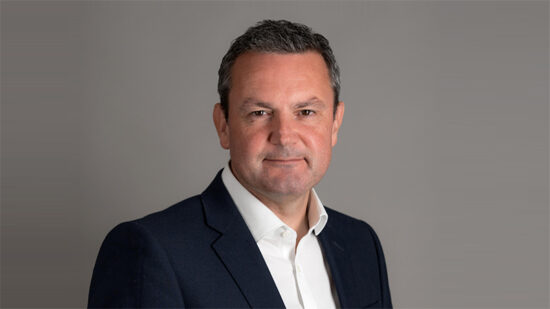When it comes to the generation X’ers, millennials, Gen Z [so on and so forth], UK financial advisers still seem to be at something of a loss.
We are still in the early stages of the great wealth transfer, meaning that the market needs to find a solution – and find one fast.
According to a recent PortfolioMetrix survey, adapting to manage the needs of younger clients is a concern for over a quarter (26%) of financial advisers in the UK.
If firms haven’t got a strategy in place for next gen clients, then consumers will take their money elsewhere.
International Adviser spoke to The Private Office (TPO), Tilney Smith & Williamson and IWP to discuss how the UK advice market should approach serving younger clients.
Difficulty
Millennials et al may appear to have vastly different needs than baby boomers, but ultimately, they still want the same outcome – to have their wealth protected and see it grow.
So, why is it so difficult for advisers to approach younger clientele?
Matthew Brown, adviser at TPO, said: “It doesn’t have to be a struggle, if anything, it’s more exciting working with younger clients, because they are at the start of their financial journey. That said, younger clients have slightly different demands to some older clients.
“Some younger clients demand greater transparency in terms of how their relationship will work with an adviser, I suppose inevitably as they tend to watch the pennies more. The most prominent challenge from younger clients is that they understandably want to see where they are receiving ‘value for money’ in terms of the services that advisers can provide to them and the costs associated with engaging our services.
“However, I believe that firms that are continually adapting their proposition for a younger audience will thrive. It also helps to have younger advisers who will naturally be able to empathise with younger clients.”
Jason Hollands, managing director at Tilney Smith & Williamson, added: “There are several issues at play here. Firstly, most advice firms are small in size and so they naturally gravitate towards older clients who in aggregate hold the lion share of investible private wealth.
“They understand that demographic cohort well and are in touch with their needs and are less focused on younger clients who typically have relatively small amounts of assets, as they are at an early stage in their financial journey, and heavily focused on a shorter-term need of getting on the first rung of the housing ladder.
“Secondly, younger people have lived and breathed an online existence all their lives and – rightly in my view – have expectations of being able to interact with the companies they deal with through apps and digital portals, as well as in person.
“On the whole, the UK wealth management and financial advice industry has been heavily underinvested in from this perspective. That’s in large part because it is so fragmented with around 5,400 firms, most of which are small businesses who have limited resources and often little IT development capability.”
Technology
Next gen clients and technology go hand-in-glove. Weaned on computers and mobile phones, the ability to access information and services via an app is taken for granted.
Fintech is the obvious solution, right?
David Inglesfield, chief executive at IWP, said: “Technology is good at providing information but not particularly good at providing informed evaluation and filtering of information, and it can’t give genuinely personal advice. This is why robo-advisers tend to attract a large volume of clients with very low average asset values.
“So, there is clearly a gap in the market to provide good advice to younger consumers, but the trick is to use technology to make the advice process cost-effective, and also accessible to younger people.”
Brown added: “Embracing technology into our proposition is a fundamental part of attracting younger clients – one of our four core values as a business is to embrace change. Younger clients demand a relationship where they are able to view their finances whenever they want to, at the click of a button, wherever they are in the world.
“However, while technology is a crucial part of a relationship with younger clients, it is not everything. Clients still come to us for our personality as well as our knowledge and expertise. And the value of ‘trust’ still remains the highest factor of all when a client embarks on a relationship with a financial adviser.
“Our role as advisers is to promote better financial behaviour and to help remove financial anxiety. If not, the technology that we employ to enhance our service to clients becomes irrelevant.”
Change
Expecting an entire client demographic to change, en masse, is… let’s say ‘optimistic’.
Meaning that it is down to the advice industry to do the heavy lifting and make itself more appealing and relevant to prospective clients.
Tilney’s Hollands said: “There is a real opportunity to democratise access to sound advice and financial guidance both across the generations and also wealth spectrum. Currently the industry is clustered around supporting the wealthiest 10% of the population, but there is a huge latent need for the power of good advice.
“With virtually everyone in the UK now getting a working place pension – and likely to collect several over their lives – most people are going to own some form of long-term saving scheme and would greatly benefit from professional help.”
IWP’s Inglesfield added: “Clearly like any business, we have to adapt to the needs and expectations of our future clients. We have an exciting opportunity, and a responsibility, to ensure that we provide advice in a way which works for the next generation.”
TPO’s Brown also said that a “key aspect” of change will also involve ESG investment. He believes that the sector will have to “cut out the jargon to be able to help people to meet their financial goals in a way that is good for the planet”.
“Coronavirus and the ever-increasing voice that younger people have on the subject of saving the planet is making the whole industry focus on ESG,” he said. “It’s vital to understand and cater for this really important aspect, as this is here to stay. Increasingly, all clients are demanding ESG options when it comes down to investing their savings or setting up a pension.”
Future
The industry will look very different a decade from now, mostly thanks to the demographic shift.
The pandemic quickened the pace of change, but the process is nowhere near finished yet.
Brown said: “In 10 years’ time we want to be working in a profession where clients will remain at the middle of everything we do – but improvements in technology will inevitably remove much of the cumbersome human aspects.
“However, the human part of the financial plan will remain important as clients are likely to still want to engage with their trusted adviser to seek confirmation and reassurance that they are still on track to achieve their financial plan. I’m truly excited to be joining this industry as we forge into a really exciting future with our young clients.”
Inglesfield added: “I think we will see an integration of technology and in-person advice so that clients can access the information and advice they need cost-effectively and flexibly. We don’t at the moment know exactly how that will work, and I think it will be an important area of research and development for the profession over the next few years.”
Hollands said: “At the moment start-up, technology-focused new entrants are making a lot of noise and doing some interesting work but ultimately their challenge is reaching clients. Robo-advisers are burning a lot of cash trying to find clients and the break-evens are many years out.
“Ultimately as the industry wakes up to the need for change, large traditional firms and banks will have a huge roll to play if they invest appropriately in developing new services that use technology to widen access across the generations and use the operating efficiencies IT can create to deliver these at a price point that doesn’t shut out the smaller, younger client.”








